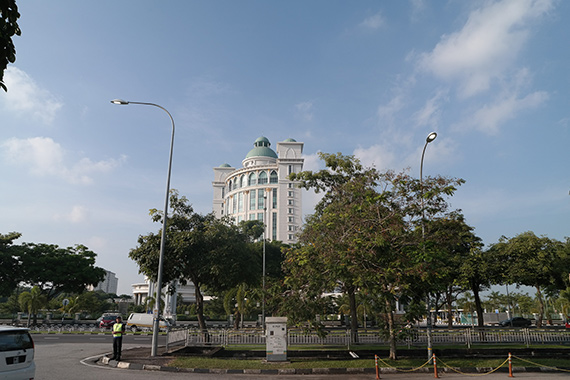OVERVIEW
Seberang Perai Municipal Council (MPSP) targeted Internet of Things and Big Data Analytics as opportunities to improve traffic and utilities in the city. Impressed by this vision, WeGO selected the city’s plan for utilizing ICT in street and traffic lamps for its 2016 Feasibility Study Program. Through WeGO and the consultants from selected firms, Seberang Perai received a Street Lamp & Traffic Light Monitoring System that uses Big Data, IoT, and mobile technology to detect malfunctioning lights without manual checking.
The pilot demonstration was operated until June 2017, with the goal of implementation throughout the Municipality in the future. By implementing a “smart system”using ICT for street lamps and traffic lights, Seberang Perai was able to have the foundation for better eGovernment services and safety of citizens.

FEATURES

- For the implementation of the pilot project, four major components were utilized: a web control system with mobile applications, a smart controller installed in a gateway to connect to the street/traffic lights, sub-controllers installed on each lamp post, and the LED lamps themselves. Additionally, the LED lamps were mounted on galvanized steel poles.
- The smart controller installed inside of the distribution box was used as a gateway to communicate with the control center wirelessly over 3G and 4G LTE. The galvanized steel lamp post itself contained automatic dimming functions. A mobile web control system, to be managed by the MPSP IT Department, linked to Google Maps, and was used to monitor and control the lights remotely.
KEY RESULTS
- The pilot system implementation showed the possibility of a full implementation of the system in the city.
- Synergized with the complaint handling system of the city, response times to outages and other technical issues would be reduced to 24 hours from 80 hours on average in the full implementation. As the lights dim and brighten on a more intelligent schedule, light pollution in times when lighting is less necessary could be reduced. On a less tangible basis, this would also increase citizen satisfaction (estimated July 2017).
- According to WeGO feasibility study 2016, the cost of the full implementation on the scale proposed was estimated $4,807,745. However, with an annual savings of $1,070,210 the project was expected to break even within five years. Sources of these savings stemmed from reduced consumption of resources, both human and electricity.
- By transitioning from sodium bulbs to LED, electricity consumption would be reduced 35% when fully implemented. Moreover, the mobile control system, which alerts the city when technical problems arise, would reduce patrols to one time per week, and alleviate human resources spent on this by 60-70% in the full implementation (estimated July 2017).
RESOURCES
RELATED POSTS
| YEAR | Number of Appointments per year |
|---|---|
| 2011-2012 | 2.3 million |
| 2013 | 33.5 million |
| 2014 | 56.9 million |
| 2015 | 63 million |
| 2016 | 63.4 million |
[/asvc_table]

